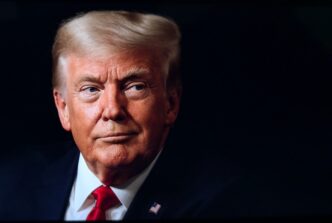KEY POINTS
Renewed proposals for significant U.S. tariffs, including a potential 60% levy on Chinese goods and a 10% universal baseline tariff on all imports, are prompting widespread analysis and concern among economists and business leaders. These protectionist measures, championed by President Donald Trump, aim to bolster domestic manufacturing and renegotiate global trade dynamics. However, economic analysts warn such policies could trigger retaliatory actions, disrupt global supply chains, and ultimately increase costs for American consumers, reigniting debates over the efficacy and consequences of trade protectionism.
The Proposed Tariff Framework
The core of the proposal involves a two-pronged approach to reshaping U.S. trade policy. The first is a universal baseline tariff, suggested at 10%, which would apply to nearly all goods entering the United States from any country. This would represent a fundamental shift from decades of policy focused on free trade agreements and targeted duties.
Proponents argue that a universal tariff would incentivize companies to relocate manufacturing back to the U.S. and reduce the nation’s reliance on foreign production. The policy is presented as a tool to level the international playing field and generate federal revenue.
A Sharper Focus on China
The second, more aggressive component is a proposed tariff of 60% or more on all goods imported from China. This measure is positioned as a direct response to what critics describe as Beijing’s unfair trade practices, including intellectual property theft, currency manipulation, and state-sponsored industrial subsidies.
This steep tariff would significantly escalate the economic pressure applied during the 2018-2019 trade disputes under the Trump administration. The goal would be to force a dramatic decoupling of the U.S. economy from Chinese supply chains, a move with profound implications for thousands of American companies that depend on Chinese manufacturing and components.
Economic Analysis: Potential Costs and Consequences
While the stated goal is to protect American industries, a broad consensus of economists predicts significant economic headwinds if these tariffs are implemented. A tariff is, in effect, a tax on imported goods, and historical precedent suggests this cost is largely passed on to consumers through higher prices.
The Impact on Consumers and Inflation
A 10% universal tariff would raise the cost of a vast array of consumer products, from electronics and clothing to automobiles and food. For American households, this would function as a broad-based consumption tax, potentially squeezing budgets and reigniting inflationary pressures that central banks have worked diligently to control.
For example, an imported car valued at $30,000 could see its price increase by $3,000, not including additional costs passed on by affected parts suppliers. This direct impact on consumer prices remains a central point of concern for economic analysts.
Retaliation and Global Trade Wars
Economists warn that trading partners, particularly major blocs like the European Union and nations like Canada and Mexico, would almost certainly respond with retaliatory tariffs on American exports. This would harm key U.S. industries, such as agriculture, aerospace, and technology, by making their products more expensive and less competitive in foreign markets.
The 2018 tariffs on steel and aluminum prompted swift retaliation from allies, hurting American farmers and manufacturers. A new, broader round of tariffs risks a much larger and more damaging global trade war, creating uncertainty that could deter business investment and slow economic growth.
Conclusion: A High-Stakes Economic Gamble
The debate over extensive new tariffs presents a stark choice between two competing economic visions. On one side is the argument for protectionism as a tool to rebuild domestic industry and correct perceived trade imbalances. On the other is the established economic view that such measures often lead to higher costs for consumers, damaging retaliatory actions, and significant disruption to a deeply interconnected global economy. As discussions continue, businesses and international partners are bracing for potential policy shifts that carry significant stakes for American households and the world’s economic stability.








